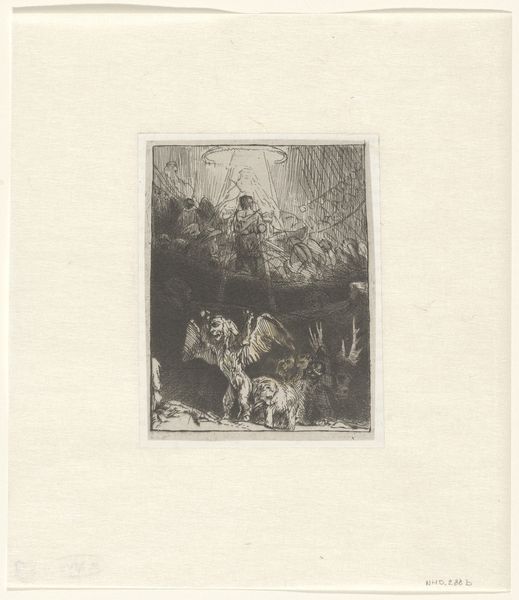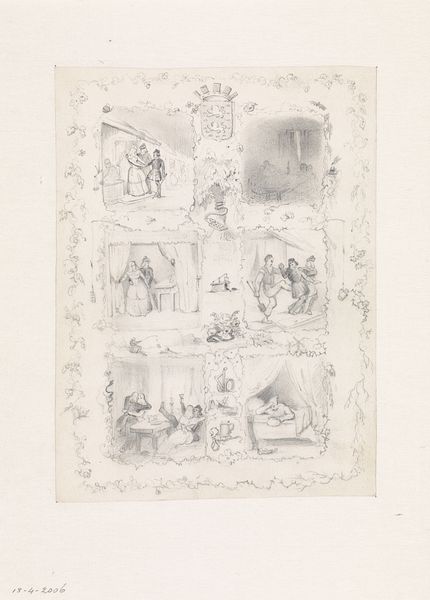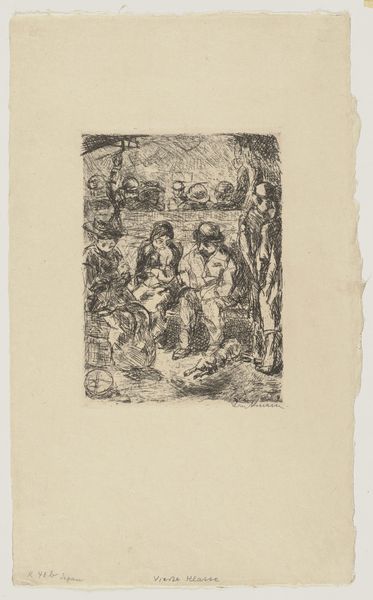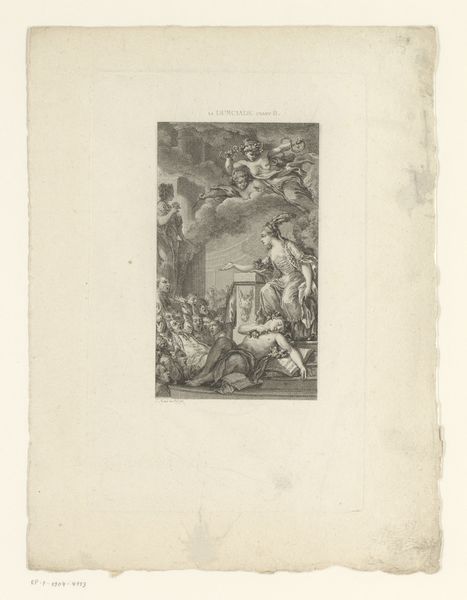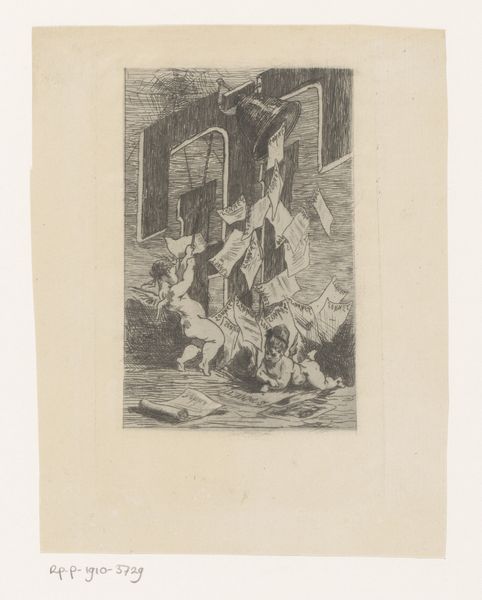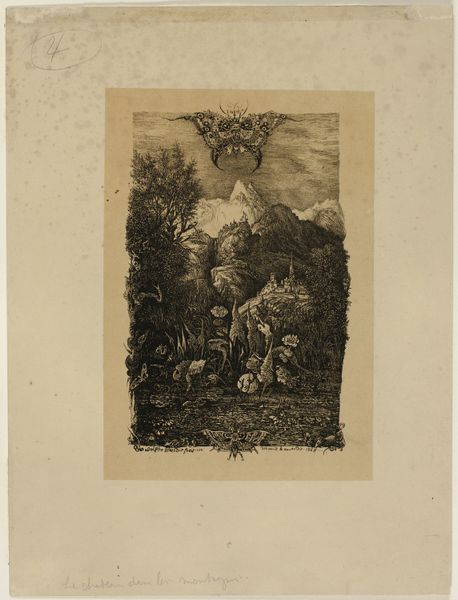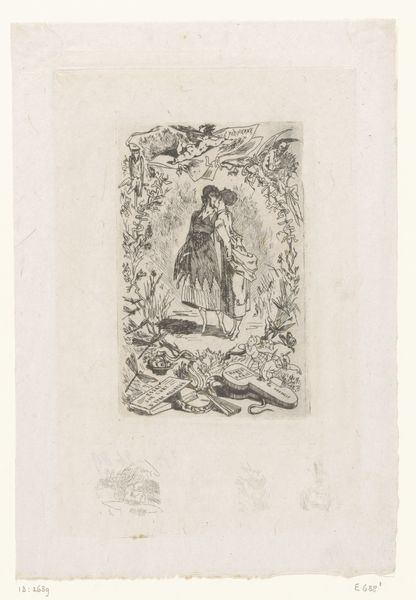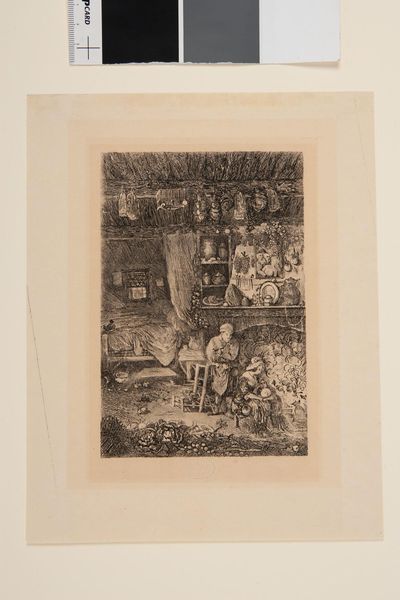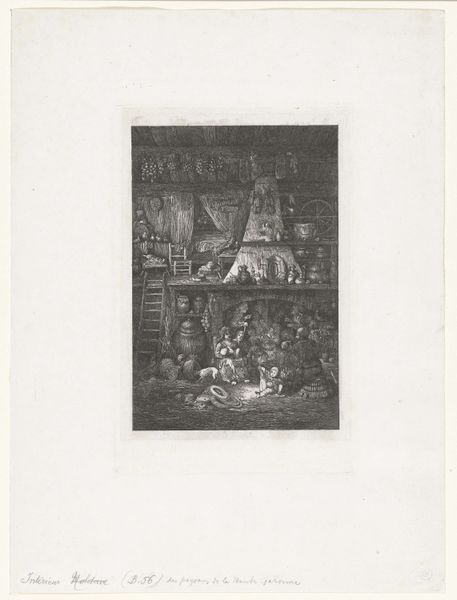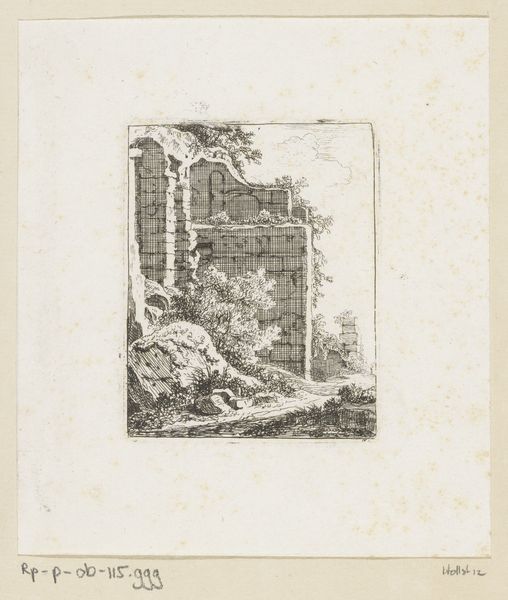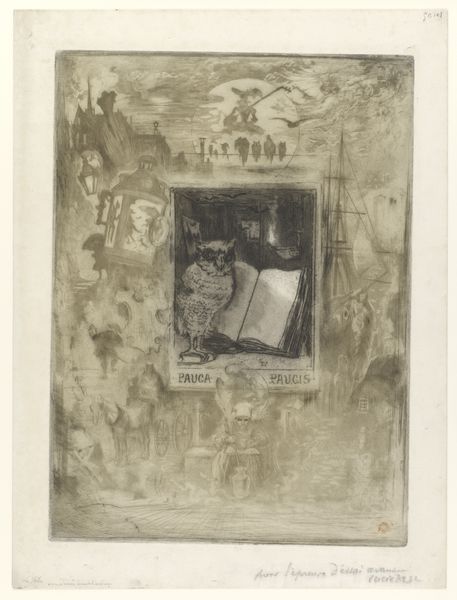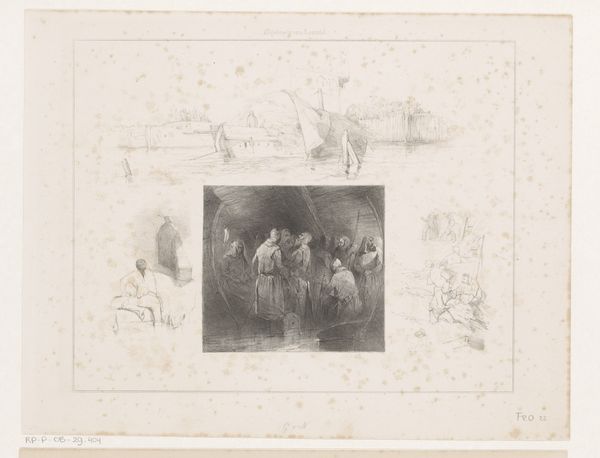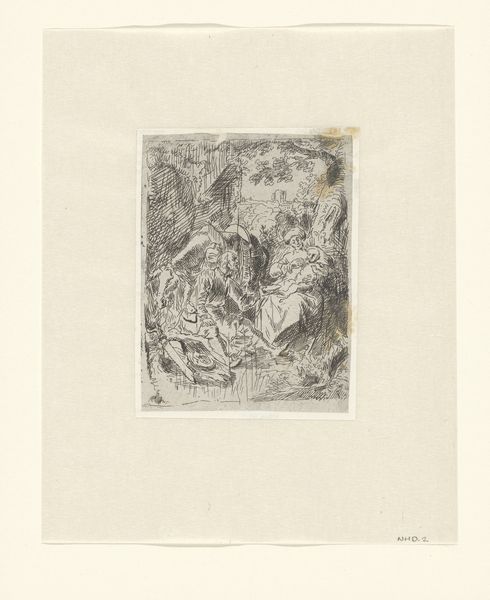
graphic-art, print, etching
graphic-art
aged paper
light pencil work
quirky sketch
narrative-art
impressionism
etching
pencil sketch
old engraving style
personal sketchbook
sketchwork
line
sketchbook drawing
cityscape
genre-painting
storyboard and sketchbook work
sketchbook art
Dimensions: height 174 mm, width 114 mm
Copyright: Rijks Museum: Open Domain
Curator: This etching, “Vrouw op een ezel in een drukke marktstraat,” or “Woman on a Donkey in a Busy Market Street,” comes to us from Félix Hilaire Buhot, circa 1857 to 1898. It is currently housed in the Rijksmuseum. Editor: My first impression is that of controlled chaos—a bustling market scene bursting forth from within the confines of its elaborate, almost whimsical, borders. Curator: Indeed, Buhot’s technical skill in etching brings an incredible depth to this relatively small work. The central composition—the market scene itself—is masterfully rendered, a complex layering of figures and architecture. Editor: It definitely speaks to the rapid urbanization of the era. This work allows us to look into a society characterized by mobility, commercial exchange, and perhaps a sense of overwhelming experience, especially in contrast to slower modes of life and gendered assumptions about labor. I can imagine, the woman on the donkey trying to cut across this patriarchal landscape. Curator: Observe the artist’s use of line; it's not merely representational. Buhot employs various weights and densities to suggest not just form but atmosphere. Notice the areas of dense, almost frantic, lines compared to the smoother gradations which delineate architectural structures. Editor: And even the placement of these figures could reflect an avant-garde spirit, echoing writers like Baudelaire who at this time were trying to make sense of a culture disrupted by modernization and its discontents. Curator: Yes, and that textured composition guides the eye, inviting us to lose ourselves in the scene’s narrative tapestry. Buhot presents us with more than just a market. He has evoked a mood and a sensation, something that speaks beyond the specifics. Editor: Absolutely. He uses those impressionistic sketches along the edges as commentary, pushing the boundaries, maybe, of our reading of "high" art. It makes us consider how artists might critique existing social hierarchies even while appearing to be documenting the world as is. Curator: The density of details also underscores Buhot’s mastery, each figure contributing to the work's energy and atmosphere. Editor: Agreed. It's more than just looking at a print of an image, it is about feeling immersed into the past through the visual world of Buhot. Curator: It certainly provides us with a rich territory for contemplation and continued investigation. Editor: And reminds us that even seemingly simple scenes reflect broader societal currents.
Comments
No comments
Be the first to comment and join the conversation on the ultimate creative platform.
